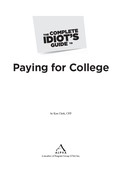Forgivable Loans Versus Loan Forgiveness
For every loan forgiveness program out there, there are probably two or three forgivable loan programs. Confused? Don’t be.
Loan forgiveness is when a student takes out standard federal loans (Perkins, Stafford, and PLUS) that might be later forgiven if the student meets certain conditions after graduating. There is no guarantee that these loans will be forgiven, and the student does not need to make any promises to actually work in any specific field while he’s going to school.
Forgivable loans, on the other hand, are typically state-based loans made to students under the assumption that they will work in a certain field immediately after graduation. If they do, then a portion of the loans will be forgiven each year. If not, they’re on the hook for paying them off. Thus, these loans are almost “preapproved” in a sense for later forgiveness.
These are great loans to utilize if you’re sure about your career path. If you’re not, you might not want to use them because their interest rates might be higher than those of federal loans and they might lack many helpful repayment options, such as the federal Income Based Repayment (IBR) program (see Chapter 6). To find out more about these forgivable loans and their availability, visit the website for your state’s student aid commission.

DEFINITION
Loan forgiveness refers to programs to which a graduate applies after he graduates and that erases his debt in exchange for service. Forgivable loans refers to loans that are made to existing students in exchange for a future commitment to work in certain professions. Students should utilize both types, if available.
..................Content has been hidden....................
You can't read the all page of ebook, please click here login for view all page.
